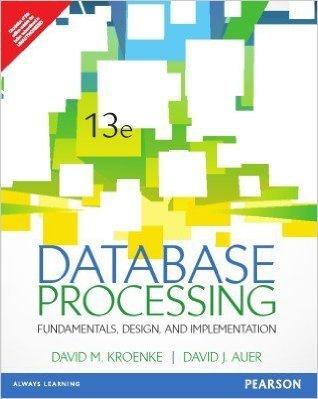Question
iPremier Company: Denial of Service Attack Case Study What is the problem? The basic assumption is that there is no decision to be made if
iPremier Company: Denial of Service Attack
Case Study
- What is the problem? The basic assumption is that there is no decision to be made if there are no problems. To understand the problem, we need to know the business of the firm (business model), how well the firm is doing (market share, profits, etc.), industry and competition. What is (are) the decisions being considered and why? This is what each group (and individuals) will do in the case preliminary analysis and what each group discussion board should attempt to answer. As the course progresses, we will see analytical tools and frameworks to improve your analysis of the problem definition.
- What are the alternatives? There is always the do nothing alternative. If everything went well (rosy scenario) what would we like to do? If everything went wrong (doomsday scenario) what should we do? What can we do in between the rosy and the doomsday scenarios? What are the pros and cons of each alternative?
- What are your recommendations? What criteria should we use to select the most suitable alternative in the case? Why are you recommending one alternative versus another? How does this alternative satisfy your criteria? How will you implement the alternative you selected?
Executive summary should be brief (1/2 page), and summarize the problem, alternatives examined, and your recommendation. Problem statement should include describing relevant key symptoms of the problem (e.g. increased competition, lack of profitability, etc.). Data analysis should quantify the problem (possibly based on analysis of the data exhibits given in the text), and provide more specific examples of its scope, breakdown, or other key information. Key Decision Criteria these should be the basis for evaluating the alternative solutions. These criteria should be traits of the solution you can measure. Phrase them like commands, like increase market share, or reduce transportation costs, etc. Be as specific as possible increase profits could imply increasing sales, reducing overhead, reducing staffing, improving market share, buying your competition, etc. Alternatives analysis should describe at least three alternatives to solve the problem. One is, of course, the actual solution used by the company. The others you invent. It helps to give each alternative a brief name (e.g. Only Sell Books, or Close Failing Departments), and refer to them that way throughout the document. Judge (i.e. score) all of the alternatives based on the decision criteria, and how well they help achieve the goals stated therein. You can choose your scoring approach; a binary yes/no score is probably too coarse, but a scale of 1 to 3, or as much as 1 to 5 points for each criterion could work. Recommendations states what your recommended course of action is to solve the problem. Your recommendation should be the highest scoring alternative. No, you dont have to follow the course that the actual company took; maybe you have a better idea! Graphing select pieces of data from the case study exhibits can be very helpful.
Step by Step Solution
There are 3 Steps involved in it
Step: 1

Get Instant Access to Expert-Tailored Solutions
See step-by-step solutions with expert insights and AI powered tools for academic success
Step: 2

Step: 3

Ace Your Homework with AI
Get the answers you need in no time with our AI-driven, step-by-step assistance
Get Started


